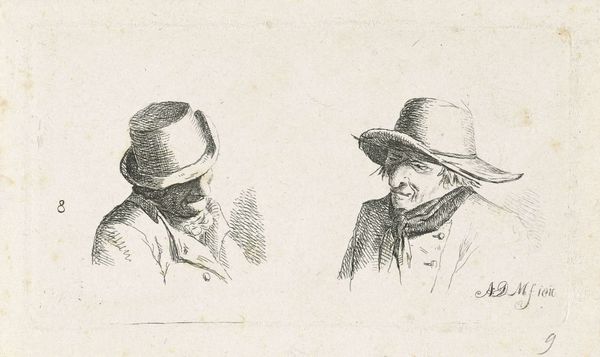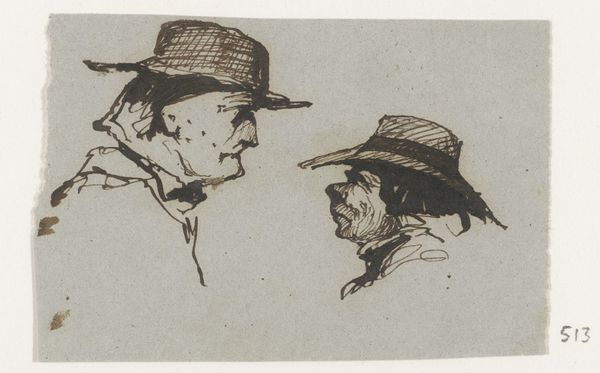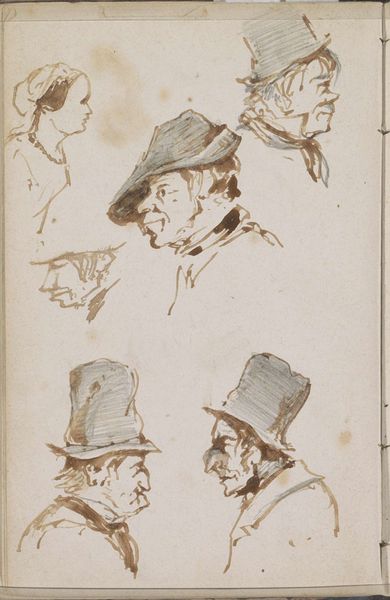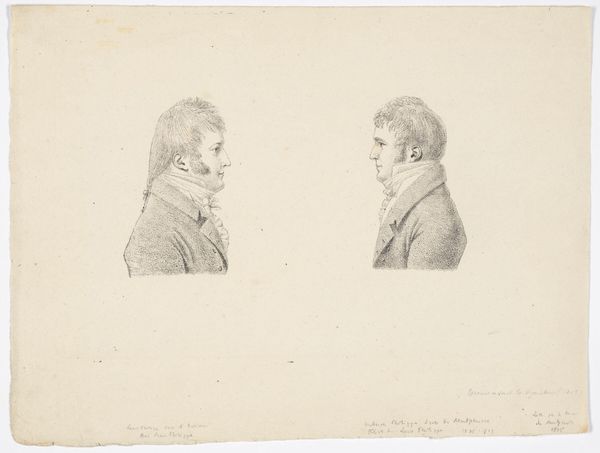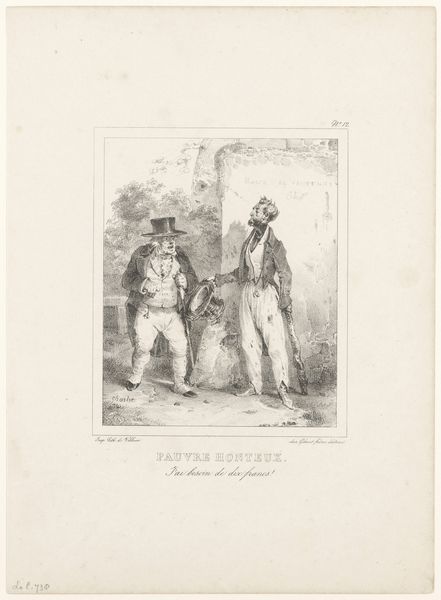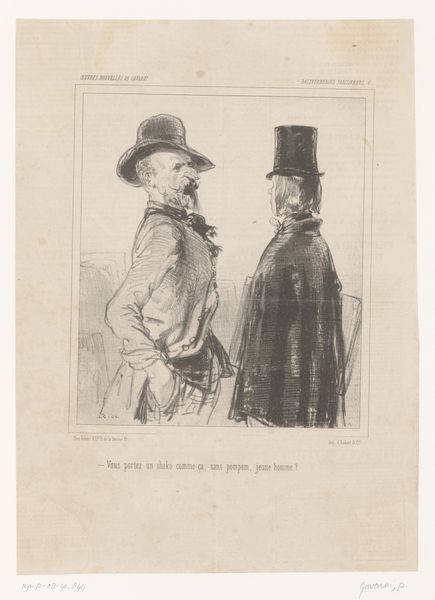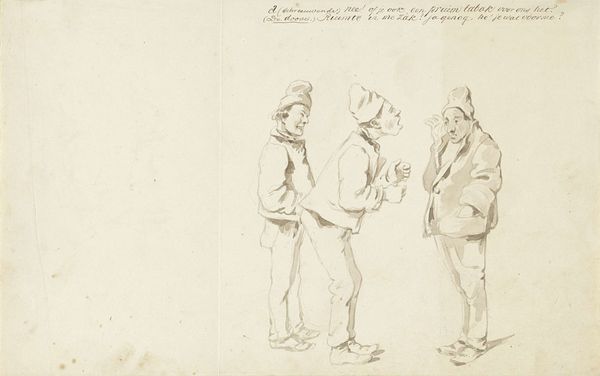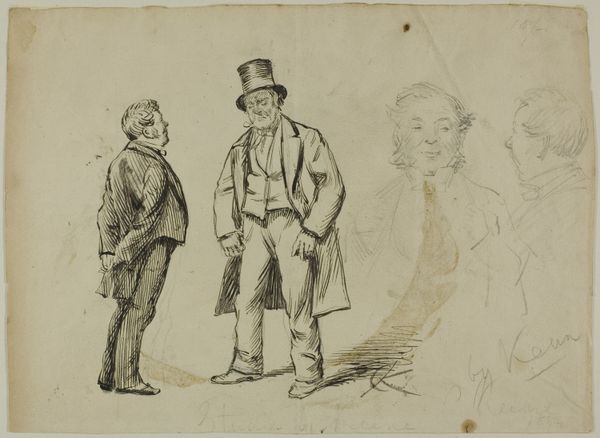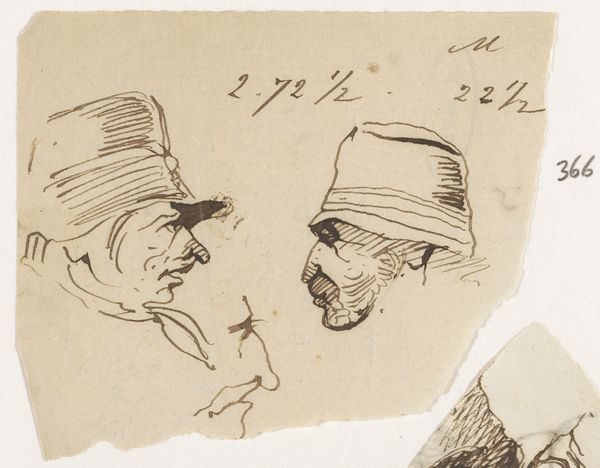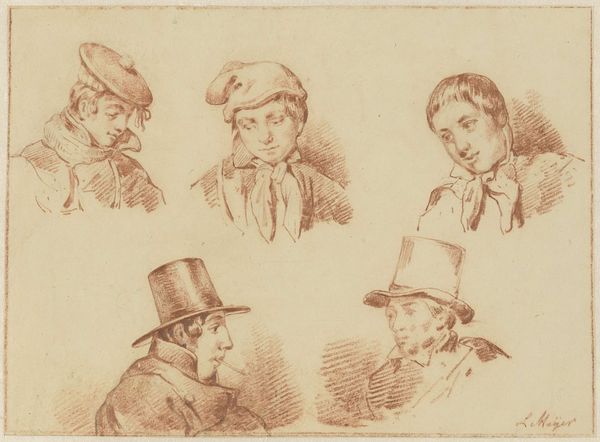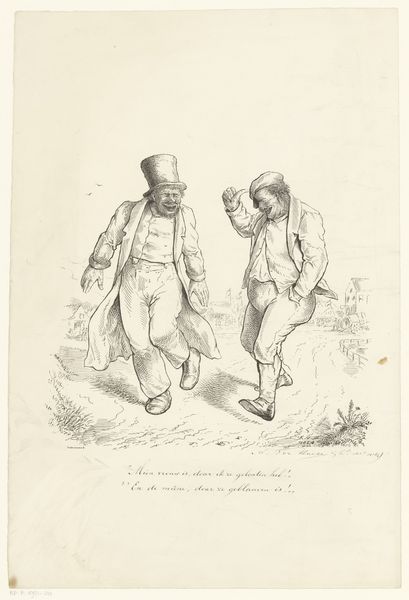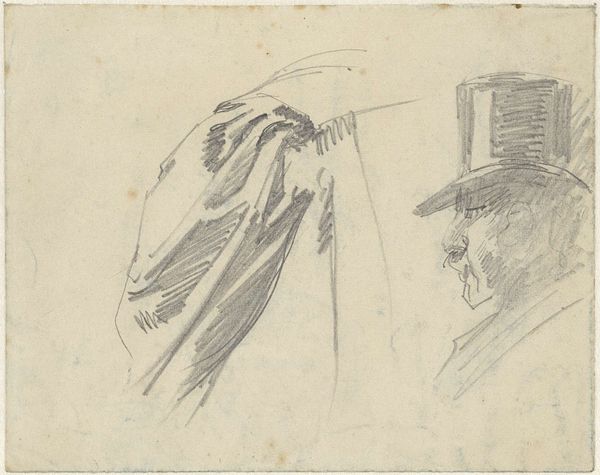
Portretten van Abraham Uytenbogaart en Hendrik Stokvisch 1796 - 1850
0:00
0:00
drawing, pencil
#
portrait
#
drawing
#
toned paper
#
pencil sketch
#
pencil drawing
#
pencil
#
genre-painting
#
realism
Dimensions: height 155 mm, width 236 mm
Copyright: Rijks Museum: Open Domain
Editor: This is a pencil drawing on toned paper from between 1796 and 1850 by Jean Augustin Daiwaille. It's called "Portraits of Abraham Uytenbogaart and Hendrik Stokvisch" and the two figures depicted look somewhat…forlorn. What stands out to you in this piece? Curator: Notice the choice of pencil on toned paper. This suggests economy. Who could afford to be rendered in paint? How does this medium reflect the social standing of the subjects and the accessibility of portraiture during that period? Are these gentlemen truly forlorn, or does the cheapness of the process imply something about their position in the emerging market economy? Editor: So, the *materials* themselves give clues about their social status? I hadn’t considered that! I assumed they were just having a bad day, haha. Curator: Precisely! Consider the labor involved in creating the work itself. Was this mass produced or a bespoke creation? Did the artist’s economic conditions play a role? Think about the pencils: What was the process of manufacturing pencils then? Were there advancements allowing for cheaper tools for the artist, and thus portraiture for a wider group of merchants? Editor: Wow, delving into pencil production never crossed my mind! This really brings a new understanding. I’m starting to think about the relationship between the artist, his tools, the subjects and emerging commercial networks of the day. Curator: And how these interlinked elements impact our view of art history, challenging the conventional emphasis on authorship by looking at the larger socio-economic systems at work. Editor: I see what you mean, that taking a materialist approach completely changes how we perceive and analyze artwork! Thanks! Curator: Indeed. This exploration, however, is a starting point.
Comments
No comments
Be the first to comment and join the conversation on the ultimate creative platform.
